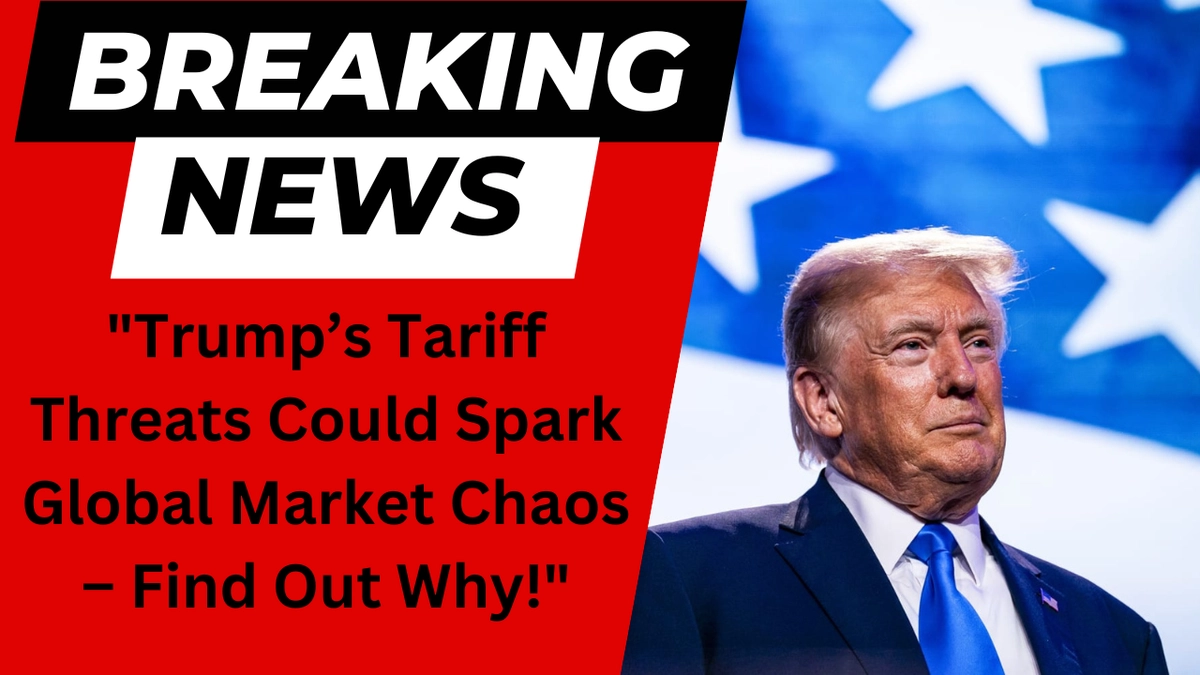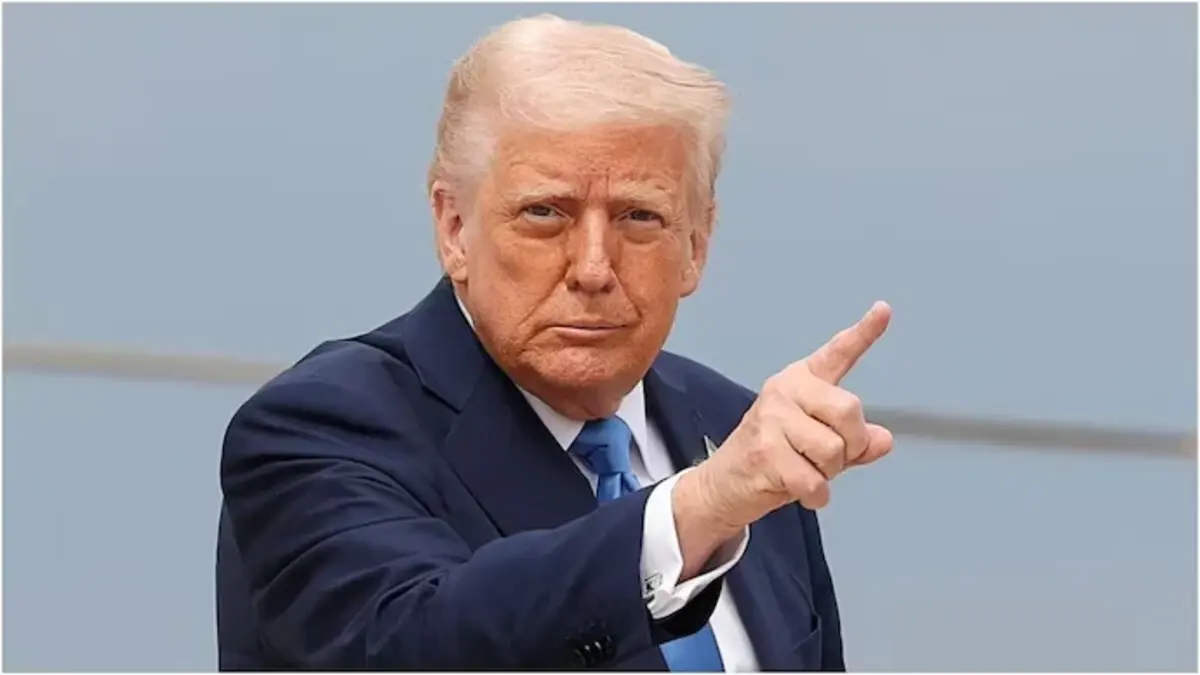As Donald Trump’s tariff threats loom large over the global economy, financial markets are feeling the intense pressure of uncertainty. With less than two weeks before his presidency officially begins, the world’s major economies are bracing for potential upheaval. Trump’s promise to impose tariffs as high as 10% on global imports, 60% on Chinese goods, and 25% on products from Canada and Mexico has triggered widespread fear across financial markets. The question on everyone’s mind is how these tariffs will affect global trade flows, inflation, and long-term market stability. The “Global Markets on Edge as Trump’s Tariff Threats Spark Massive Volatility” is more than just a headline—it represents the deepening concern among investors worldwide.
- 1 Global Markets on Edge as Trump’s Tariff Threats Spark Massive Volatility: What to Expect
- 2 Eurozone Faces Uncertainty: The Impact of Trump’s Tariff Threats
- 3 Auto Sector Struggles as Tariff Uncertainty Looms
- 4 Canada and Mexico Brace for Potential Economic Impact
- 5 Conclusion: The Uncertainty Continues as Tariffs Loom
Global Markets on Edge as Trump’s Tariff Threats Spark Massive Volatility: What to Expect
The markets are already feeling the weight of Trump’s tariff threats, with major currencies, commodities, and equities showing signs of strain. China, in particular, stands to bear the brunt of these tariff impositions. Goldman Sachs has pointed out that China could be the primary target of these tariffs, especially as Trump continues his stance against trade imbalances. The Chinese yuan has already hit its weakest point in 16 months, falling below the symbolic 7.3 yuan mark, which the Chinese government had previously defended. With Trump’s tariffs potentially targeting as much as 60% of Chinese imports, analysts expect the yuan to depreciate further, possibly touching 7.5 or even 8.4 per dollar by the end of 2025.
This currency depreciation has already caused significant disruption in China’s stock markets. The country’s investors are pulling back as they brace for what could be an extended period of economic contraction due to tariff-induced inflation and the possibility of retaliatory tariffs from China. The “Global Markets on Edge as Trump’s Tariff Threats Spark Massive Volatility” is increasingly becoming a reality, with both local and international investors questioning the long-term sustainability of Chinese economic growth under such conditions.
Read this article Who is Tim HO
Eurozone Faces Uncertainty: The Impact of Trump’s Tariff Threats
The euro has taken a hit since the U.S. presidential election, falling more than 5% against the dollar and reaching a two-year low of $1.04. Experts believe the euro could slide further, possibly dipping to parity with the dollar, as the reality of Trump’s tariff threats starts to sink in. As the European Union’s largest trading partner, the U.S. is critical to Europe’s economic health, with over $1.7 trillion in two-way trade. If Trump’s tariffs hit China and Europe simultaneously, it could create a toxic mix for the euro, weighing heavily on the region’s currency.
The European Central Bank (ECB) is already under pressure, as traders expect at least 100 basis points of rate cuts this year. On the other hand, the Federal Reserve is expected to only reduce rates by 40 basis points, which further boosts the dollar’s appeal over the euro. The “Global Markets on Edge as Trump’s Tariff Threats Spark Massive Volatility” not only affects the euro, but it also casts doubt over the strength of Europe’s recovery, exacerbating economic weaknesses in the region. Markets are worried about how tariff impositions could further dampen growth prospects, especially in countries that are already struggling.

Auto Sector Struggles as Tariff Uncertainty Looms
The auto sector, particularly in Europe, has also been hit hard by the tariff threats. Auto stocks have fluctuated wildly, with a sharp spike in values following reports that Trump’s team was considering limited tariffs only on critical imports. However, those gains were quickly erased when the president-elect denied the report, reinforcing how vulnerable this sector is to any tariff news. With the auto industry being one of the most trade-exposed sectors, the “Global Markets on Edge as Trump’s Tariff Threats Spark Massive Volatility” sentiment is acutely felt here.
Already, auto stocks have seen a significant loss in value since April 2024. European automakers have shed a quarter of their market value, as the threat of higher import duties could further increase production costs and damage margins. Investors are now nervous, and analysts at Barclays have warned that tariffs targeting key exports such as cars could severely hamper growth in this crucial sector.
Canada and Mexico Brace for Potential Economic Impact
Across the Atlantic, Canada and Mexico are facing heightened risks from Trump’s tariff threats. Both countries are deeply integrated with the U.S. economy, with Mexico’s exports accounting for 80% of their total trade going to the U.S. The Mexican peso has already been volatile, falling by 16% against the dollar in 2024. Trump’s threat of imposing a 25% tariff on both Canada and Mexico has intensified fears of further currency devaluation and economic contraction in these nations.
The Canadian dollar has already weakened to its lowest point in over four years, and some analysts believe it could fall further, particularly if Trump carries through with his tariff threats. Goldman Sachs has projected that the loonie could reach 1.50 per U.S. dollar if a full-scale trade war ensues. “Global Markets on Edge as Trump’s Tariff Threats Spark Massive Volatility” is certainly not an overstatement for Canada, where prolonged trade talks or the imposition of tariffs could slow down growth and create uncertainty in financial markets.
Conclusion: The Uncertainty Continues as Tariffs Loom
As the global markets continue to react to Trump’s tariff threats, the long-term economic fallout remains uncertain. The “Global Markets on Edge as Trump’s Tariff Threats Spark Massive Volatility” will likely remain a defining theme of the coming months, especially as trade relationships become increasingly strained. With major global economies like China, the European Union, Canada, and Mexico all feeling the heat, the consequences of a potential trade war could reverberate far beyond just the markets.
The uncertainty surrounding tariffs is already causing significant disruptions in currencies, stock prices, and global trade flows. Investors and businesses alike will need to brace for continued volatility as President Trump enters office, and only time will tell whether these tariff threats become a reality or if diplomatic negotiations can ease the tensions and stabilize the global economy.








